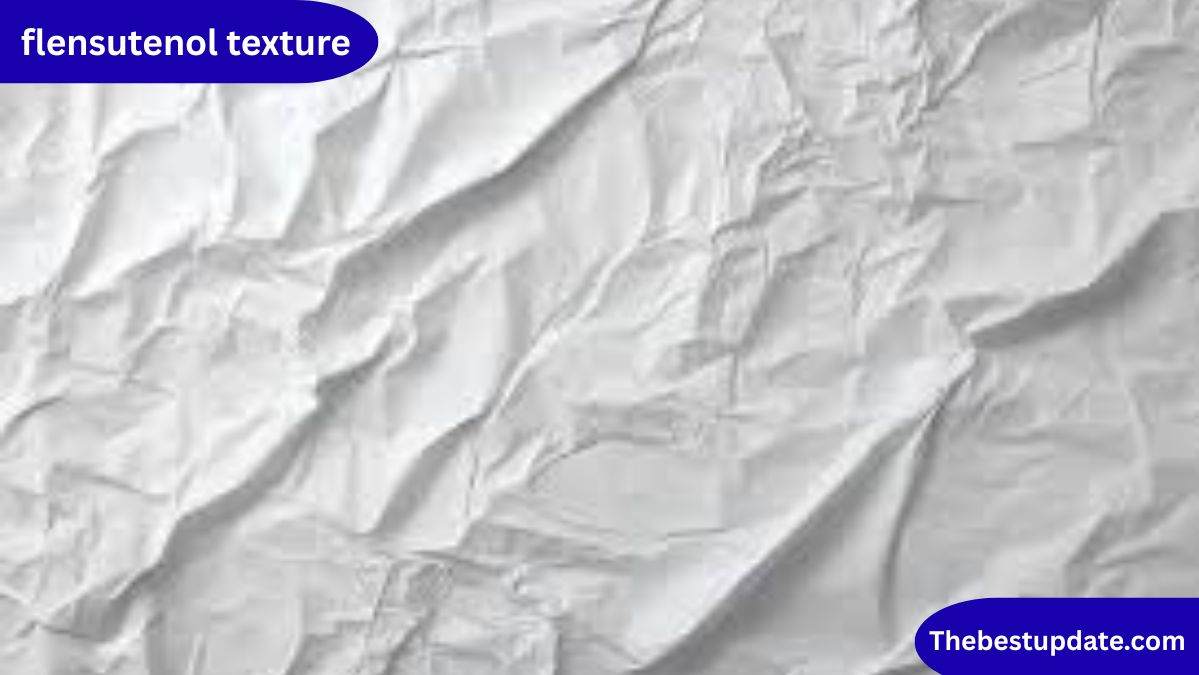Flensutenol texture is a term that’s becoming increasingly relevant in various scientific and industrial fields, especially those dealing with advanced materials and compounds. While it may sound technical and complex, understanding the texture of flensutenol is crucial for anyone working with this substance, whether in pharmaceuticals, material sciences, or chemical manufacturing.
In this article, we’ll dive deep into what flensutenol texture really means, why it matters, and how it influences the performance and applications of this intriguing compound. So, let’s break it down step-by-step, without drowning in jargon.
What Is Flensutenol? A Quick Overview flensutenol texture
Before we get into the texture, it’s important to grasp what flensutenol actually is. Flensutenol is a synthetic compound often used in research settings and industrial applications due to its unique chemical properties. It’s not a household name, flensutenol texture but it’s gaining traction because of its versatility.
Flensutenol belongs to a class of compounds known for their complex molecular structures, which contribute to their particular physical and chemical behaviors. flensutenol texture These behaviors, in turn, are closely tied to the texture of the material, making texture analysis a key part of understanding flensutenol’s full potential.
Texture, in this context, refers to the surface and internal structure characteristics of the compound—how it feels, looks, and behaves under various conditions. This can include anything from granularity and smoothness to crystal formation and how it interacts with other substances.
Why Texture Matters in Flensutenol
Texture might sound like a superficial characteristic—something you’d consider only if you were talking about food or fabrics. But for compounds like flensutenol, texture is a fundamental property that affects everything from stability to effectiveness.
For example, in pharmaceuticals, the texture of a compound influences how it dissolves or binds with other ingredients. If flensutenol has a coarse, uneven texture, it might dissolve slower, affecting the timing and potency of a drug. On the other hand, a smooth, fine texture could enhance its reactivity and bioavailability.
In industrial applications, texture impacts how the compound behaves during manufacturing. A gritty or irregular texture might cause issues with processing equipment, while a consistent, uniform texture ensures smoother handling and better end-product quality.
Moreover, the texture often hints at the purity and crystalline structure of flensutenol. Any irregularities or inconsistencies might indicate contamination or incomplete synthesis, which can drastically affect performance.
Exploring the Characteristics of Flensutenol Texture
The texture of flensutenol is not just a single attribute but a combination of several physical characteristics. When analyzed under microscopes or through texture analyzers, it reveals a detailed picture of the compound’s morphology.
One of the key features is crystal size and shape.flensutenol texture Flensutenol tends to form needle-like or plate-like crystals, depending on the synthesis process and environmental conditions. These crystals can be sharp-edged or more rounded, influencing how the material packs together.
Another important aspect is surface roughness. The roughness affects how the compound interacts with solvents, other chemicals, or even biological tissues. A rough surface can increase surface area, which might be beneficial for certain reactions, but it could also lead to unwanted aggregation.
Lastly, particle distribution plays a crucial role. If the texture consists of uneven particle sizes—some very fine, others larger clumps—it can create challenges in achieving a homogenous mixture or stable suspension. Uniform particle size distribution is usually preferred for consistency in performance.
How to Measure Flensutenol Texture?
Measuring the texture of flensutenol isn’t as simple as just touching or looking at it. Scientists rely on a variety of instruments and techniques to get an accurate picture.
One common method is scanning electron microscopy (SEM), which provides high-resolution images of the surface texture and crystal morphology. SEM can reveal even the tiniest imperfections and the detailed arrangement of particles.
Another technique is X-ray diffraction (XRD), which helps flensutenol texture determine the crystalline structure and any variations that contribute to texture differences. XRD can show how molecules are arranged and if there are defects that influence texture.
Texture analyzers and rheometers might also be used to study mechanical properties related to texture, such as hardness, brittleness, or cohesiveness. These measurements are crucial in predicting how flensutenol will behave in real-world applications.
The Impact of Texture on Flensutenol Applications
Understanding and controlling the texture of flensutenol opens doors to optimizing its use in various fields. For instance, in drug formulation, modifying the texture can improve the compound’s solubility, making medications more effective and reliable.
In materials science, a precise texture can lead to better integration of flensutenol in composites or coatings. This can enhance strength, durability, or even aesthetic qualities of the final product.
Even in chemical synthesis, texture can influence reaction rates and yields. A finely textured flensutenol may react more efficiently, reducing waste and cost.
In essence, texture isn’t just a physical trait—it’s a tool. By mastering texture control, flensutenol texture researchers and manufacturers can unlock new potentials and tailor flensutenol for specific purposes.
Tips for Handling and Optimizing Flensutenol Texture
If you’re working with flensutenol, here are some practical tips to keep texture in check:
- Control synthesis conditions: Temperature, solvents, and reaction times can drastically alter the texture. Fine-tuning these parameters leads to more consistent results.
- Use appropriate milling or grinding: If you need a finer texture, mechanical processing like milling can reduce particle size, but be cautious not to overdo it, as it might cause unwanted changes.
- Monitor storage conditions: Moisture, temperature, and exposure to air can degrade the texture over time. Proper storage extends shelf life and preserves quality.
- Regular texture analysis: Implement routine testing to ensure texture consistency batch to batch. This helps catch issues early and maintain high standards.
Conclusion: Why Texture Is the Unsung Hero of Flensutenol
Flensutenol texture may not be the flashiest topic, but it’s undeniably important. Texture influences everything from handling and processing to the effectiveness of end products. Whether you’re a scientist, engineer, or manufacturer, understanding this subtle yet powerful attribute can elevate your work with flensutenol.
By paying attention to texture, you’re not just dealing with a compound—you’re unlocking its full potential and ensuring that it performs exactly as intended. So next time you hear “flensutenol texture,” remember: it’s a key piece of the puzzle in making this compound work wonders.
Admin of The Best Update, overseeing site management and ensuring smooth operations to deliver the best experience for readers.




